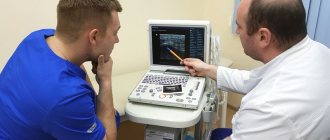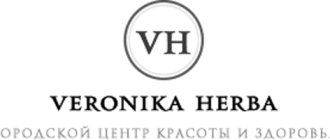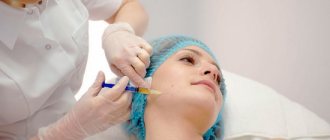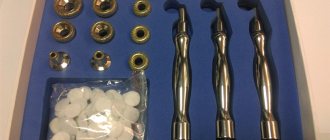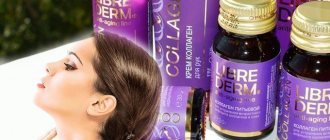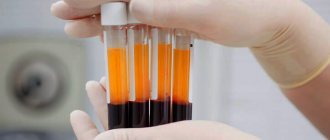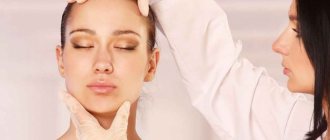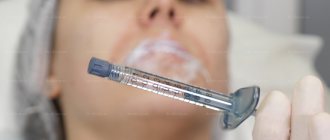Plasmolifting (PRP, Plateletrichplasma) is an injection method of subcutaneous administration of platelet-rich plasma from the patient’s own blood, leading to the activation of regenerative processes in the skin. Human blood plasma contains the substances fibrin and collagen. They are the ones who participate in the construction of new tissue cells in the body. These substances help restore cells of any organ, be it skin that has lost its elasticity or brittle hair. The essence of the method is to isolate plasma from human blood and then inject it into the area requiring restoration.
In addition, plasma has a high concentration of platelets, which contain special growth factors and proteins. They stimulate the production of fibroblasts in stem cells, which enhances the regeneration process.
Mechanism of action of plasma lifting
To use this method of cell regeneration, platelet autoplasma (TAP) is required. It does not contain red blood cells, and the number of platelets in it is close to their number in peripheral blood (150-350 thousand/μl). Such plasma is very rich in amino acids, mineral elements (potassium, magnesium, zinc, iron, calcium, etc., peptides and vitamins B, C, A, D, E, K, necessary for the life of cells. Being a natural component of the human body , autoplasma does not cause allergic reactions. This method is also universal due to its bioavailability, due to which regeneration processes occur naturally.
Physiologically, the process of plasmolifting occurs as follows: when platelets lose contact with the endothelium, leaving the capillaries and vessels, they change their shape and secrete alpha granules, which saturate the damaged area with growth factors.
The same thing happens in the plasmolifting procedure, when autoplasma is injected into the desired area, i.e. platelet adhesion and the release of growth factors from alpha granules occur, as in a normal protective physiological process.
Types of acne
According to the type of external manifestations, all acne can be divided into groups. The most common occurrence on the face is papules and whiteheads, which may be accompanied by itching and irritation. For the body (back, chest, shoulders, buttocks), red pustules (pustules) are most characteristic. They are dangerous because, with severe inflammation, they can leave behind marks (so-called post-acne scars). Special forms of acne are acne of a genetic type (with a predisposition) and steroid acne, which occurs due to taking pharmacological (usually hormonal) drugs (including to improve performance in sports). Finally, there are deep rashes in the form of inflammatory nodes - conglobate acne, characterized by a severe form and rough scars after healing.
How does the plasma lifting procedure work?
Blood taken from the patient is subjected to a centrifugation procedure to separate red blood cells. Platelet autoplasma should be yellow. After 10-15 minutes, the prepared platelet autoplasma can already be used as an injection into the area required for treatment. Before this, the skin is treated with a special anesthetic cream. A thin needle is taken and the drug is injected using the papular method.
The course of treatment using plasma lifting is prescribed individually, based on the initial condition and degree of cell damage. On average, 3-4-5 procedures are recommended with an interval of about a week - such a course produces a noticeable effect. To maintain improved cell condition, you can repeat the procedure once every year or two.
How plasma works
The first thing that plasma with platelets that get under the skin is to trigger active regeneration processes, that is, restoration . As well as the synthesis of substances necessary for beauty and youth, or rather proteins - elastane and collagen. Therefore, just a few days after the first procedure, the skin begins to change its appearance, and the results of the full course of plasma lifting are impressive! The most important thing is that changes occur not only outside, but also inside, which allows you to maintain the acquired effect for a long time - up to six months.
Indications for plasma lifting
In cosmetology, the use of plasma lifting is advisable in the following cases:
- loss of skin elasticity, deterioration of its turgor;
- unwanted skin pigmentation;
- noticeable facial wrinkles, the appearance of age-related folds on the skin;
- sagging face, deterioration of facial oval;
- gray, “tired” complexion;
- post-acne and acne;
- scars and stretch marks on the skin;
- hair loss (alopecia) and deterioration of their condition.
Of course, the use of autoplasma in cosmetology is not limited only to the face and scalp; these reasons are only the main ones. The method is used on any part of the human body that has defects. Body plasma lifting is a popular procedure. It is used locally to treat cellulite and obesity and rejuvenate the skin of the body.
The essence of biorevitalization
Another injection procedure that helps restore youth to the face is biorevitalization. Hyaluronic acid is the main component of biorevitalization preparations; thanks to it, the skin becomes more hydrated and elastic, and recovers faster.
A little about hyaluronic acid
Hyaluronic acid keeps the skin hydrated because it retains moisture in its cells and creates an imperceptible protective film on the surface. Hyaluronic acid in the human body is found not only in the skin, but also in all other parts of it - in joints, bones, and nerve tissues. For the first time it was discovered in the eye, or rather in its vitreous body.
As a person ages, hyaluronic acid is removed from the body more actively, which leads to the appearance of wrinkles and sagging skin. 25 years is still a very young age, but by this time the formation of the element in the body slows down.
Contraindications
During a biorevitalization session, not pure hyaluronic acid is injected into the skin, but a drug based on it. Some components of this drug may cause an allergic reaction. Despite the fact that the likelihood of such an outcome is low, performing biorevitalization on people allergic to the components of hyauronate is unacceptable. Those who suffer from cancer and autoimmune diseases, pregnant and lactating women will also have to refuse biorevitalization. If there is damage to the facial skin, the procedure is also not performed.
Contraindications for plasma lifting
Despite the maximum naturalness of this method and the greatest proximity of autoplasma to the components of the blood of a certain person, the cosmetic procedure of plasma lifting has a certain number of contraindications. Among them are:
- Purulent-infectious skin diseases;
- Diabetes;
- Bleeding disorders and blood diseases;
- Decreased immunity;
- Oncology;
- Hepatitis;
- Diseases of the kidneys and pancreas.
At the same time, plasma lifting has a minimal risk of complications and side effects, because with this method no foreign substances are introduced into the body. This is its main difference from biorevitalization and mesotherapy procedures.
The individual effect of using this method is due to the dependence on the initial state of the cells. Plasmolifting is attractive primarily for its simplicity and naturalness, as well as the minimal risk of side effects. The skin is not injured. What is better biorevitalization. mesotherapy or plasma lifting for each specific patient can only be determined by a cosmetologist.
Benefits of Facial Plasma Therapy
Plasma therapy for the face is one of the most effective methods of modern cosmetology. During use, it demonstrates five undeniable advantages.
- Maximum physiology. The introduction of platelet-rich plasma allows you to activate the internal reserves of the skin and its structures. Positive results from its use are achieved naturally - without drugs, surgeries or complex manipulations.
- 100% biocompatible. Plasma is taken from the patient’s own blood – it is “native” to his body. Its administration does not cause side effects such as rejection or allergic reactions and is well tolerated by the body. The risk of infection by pathogenic organisms is zero.
- Versatility. The technique has no restrictions on age, gender, skin type and complexity of aesthetic problems. It is carried out to eliminate both visible skin imperfections and the causes of their appearance, and for the purpose of their prevention.
- Minimally invasive and comfortable. Plasma is injected using miniature mesotherapy syringes. Their microneedles do not cause significant harm to the skin, and the moment of puncture does not cause severe pain. If the patient has a low pain threshold, he is afraid of injections and pain, we use local anesthesia, which eliminates all discomfort. In essence, mesotherapy with blood plasma is performed - a safe, non-threatening, low-painful procedure.
- Quick visible results. To achieve the desired effect, only 2–3 plasma therapy procedures are sufficient.
Despite the advantages of plasma lifting, the method has one disadvantage - the presence of contraindications, which we will discuss a little later.
The effect of plasma lifting
Most patients notice a noticeable positive effect after 1-1.5 weeks. Some note that the effectiveness of plasma lifting occurs after the first injection. The result depends on age, skin condition and characteristics of the body as a whole.
Among those who have tried the plasmolifting method on themselves, the majority leave good reviews about the procedure, which will help shape the attitude towards this method in new patients. Many women note that the result of the procedure is skin rejuvenation, a fresher appearance, gradual smoothing of scars and a reduction in the effects of acne. The skin becomes more elastic and tightened.
Some patients complain of swelling and bruising on the skin after using an autoplasma injection, but in fact this is an obvious consequence of the cosmetic procedure. Side effects from plasma lifting are extremely rare and are usually associated with a violation of the procedure protocol or a violation of the rules of asepsis and antisepsis. Some are confused by the fact that for a noticeable effect, not one, but a certain number of injections are required, and the cost of such a procedure may not be affordable for everyone.
The plasmolifting technique has: A rejuvenating effect.
Helps remove dead cells, promoting the formation of new ones, smoothes the skin, increasing its turgor, the skin becomes tender and soft to the touch. Activates the BCL-2 gene, which delays cell aging.
Protective effect.
Strengthens the protective barrier against the effects of harmful ultraviolet radiation, improves skin regeneration, due to which small wounds and scars heal faster. The skin becomes protected from the effects of all kinds of external factors that have a negative impact on its condition: temperature changes, sunlight, the consequences of taking strong medications. Suppresses the proliferation of pathogenic microflora.
Moisturizing effect.
Prevents skin dehydration. The skin is deeply hydrated and the synthesis of macromolecular proteins, which provide skin elasticity, is improved. Skin cells retain more moisture inside, which eliminates the feeling of tightness, dryness, and reduces the appearance of skin irritation and inflammation.
Reduces skin photosensitivity.
The appearance improves due to increased cell metabolism, which prevents the appearance of age spots after sun exposure, which leads to an even complexion.
Improves skin trophism.
The process of blood circulation in the dermis is enhanced, metabolic processes are accelerated, which leads to cell renewal, the skin takes on a healthy and fresh appearance.
Lifting effect. Skin cells are renewed and saturated with moisture, the oval of the face is tightened. Fights hyperpigmentation. The stratum corneum is exfoliated, skin cells are renewed, and facial tone is evened out.
Plasmolifting in aesthetic cosmetology
Plasmolifting is an effective and safe method of regenerative medicine based on the principles of autohemostimulation. Unlike autohemotherapy, plasma lifting uses not the patient’s venous blood, but plasma isolated from it containing platelets [1].
The essence of the plasmolifting method is the injection of platelet plasma according to the principle of mesotherapy into the deep layers of the dermis. The authors of the method, who received a patent in the Russian Federation, are Russian scientists: Doctor of Medical Sciences R. Akhmerov and Candidate of Medical Sciences R. Zarudiy. They were the first to use plasma lifting to restore patients who had undergone maxillofacial surgery [2].
Today, the method is successfully used in cosmetology and trichology, dentistry, orthopedics and traumatology, gynecology, urology and sports medicine.
Human blood plasma is a complex mixture of many biologically active components with different physiological activities. The main components of serum include: plasma proteins (albumin, fibronectin, alpha-2-macroglobulin, fetuin, transferrin, polypeptide growth factors (insulin, insulin-like growth factors I and II (IGF), platelet-derived growth factor (PDGF), epidermal growth factor ( EGF)), glutathione, non-peptide hormones (cortisol, hydrocortisone), estrogens, androgens, thyroid hormones (T3, T4), lipids (linoleic acid, cholesterol, lysophosphatidic acid, prostaglandins); metabolites (amino acids, alpha-keto acids (pyruvate), polyamines), minerals (Fe2+, Zn2+, Cu2+, Mn2+, SeO32–, Co2+, VO3–, Mo+) (HR Maurer, 1986) [4].
The most important functions of blood plasma are provided [4]:
1) factors that stimulate cell growth; 2) factors of attachment and “spreading” (matrix); 3) transport proteins that carry some hormones, minerals, lipids, etc.
Most growth factors are present in blood plasma in very low concentrations (on the order of 10–10 M). Some of them affect only cells of a strictly defined type of differentiation, for example, hematopoietic growth factors. Others have a wide spectrum of action. Epidermal growth factor, for example, stimulates the proliferation of fibroblasts, epidermal and glial cells.
Among the hormones, insulin is the most essential for the growth of almost all cell types in culture. Because it has a short half-life and is sensitive to inactivation by cysteine, it is usually added to the medium in high concentrations.
Glucocorticoids (hydrocortisone, dexamethasone) can stimulate or inhibit cell proliferation in culture depending on the cell type and culture density. They can modulate cell proliferation by altering the response to growth factors.
Some cell lines require special steroid hormones (estradiol, testosterone, progesterone) for growth.
Blood plasma also contains proteins whose function is to bind molecules with low molecular weight. Albumin binds vitamins, lipids (fatty acids, cholesterol), steroid hormones, etc. Iron-saturated transferrin is necessary for most cells in culture, many of which have specific transferrin receptors on the surface [4].
Blood plasma is also a source of various lipids necessary for the survival and growth of cultured cells. Cell lines vary in their requirements for fatty acids, phospholipids, lecithin and cholesterol.
The role of various inorganic elements contained in trace amounts in plasma (Cu, Zn, Co, Mn, Mo, Va, Se) is not fully understood, but it is known that many of them act as cofactors of enzymes. SeO32– is required for the activation of a number of enzymes involved in metabolic detoxification. Selenium is also involved in the inactivation of free radicals.
Thus, the plasma used during the procedure is the human body’s own product, containing many useful substances, and, most importantly, it does not cause rejection reactions or side effects [4]. Thanks to this, plasma lifting is today one of the safest and most effective methods of anti-aging medicine.
The most common procedure involving intradermal plasma injection is facial plasmolifting. Despite the simplicity of the plasma lifting procedure, it is necessary to remember that this procedure is primarily therapeutic and requires an appropriate approach. Firstly, before prescribing it, a consultation with a specialist is required, and standard blood tests are taken. Immediately 2-3 days before the procedure itself, for its effectiveness, the following recommendations should be followed:
- exclude the use of pro- and anticoagulants, as well as medications such as Aspirin or Citramon;
- increase the amount of water you drink (at least 2 liters per day);
- do not drink alcohol, preferably tobacco;
- give up fatty and spicy foods, including chips;
- reduce physical activity.
On the day of the procedure, 3-4 hours before the procedure, do not eat. It is easiest to come on an empty stomach in the morning, so it is better to have a session in the first half of the day [5].
Plasmolifting technique
The technique of plasma lifting [6] is as follows. The procedure begins with taking 10–20 ml of venous blood from the patient into a test tube containing an anticoagulant and separation gel (depending on the manufacturer). Then, using a laboratory centrifuge, the blood is divided into fractions:
1) cellular component (erythrocytes, leukocytes); 2) platelet-rich plasma (about 1 million/μl); 3) platelet-poor plasma (less than 150 thousand/μl).
Platelet-rich plasma is injected into problem areas pre-treated with an antiseptic using microinjection. For pain relief, topical anesthesia (numbing cream) can be used. At the end of the procedure, problem areas are re-treated with an antiseptic.
To prevent side effects, the authors of the method are prohibited from modifying it by adding any other components to platelet-rich plasma, including vitamins and mesotherapy preparations.
The duration of the procedure is 40–50 minutes.
Only in 40% of cases a positive effect is visible after the first procedure. To obtain a pronounced effect, several procedures are necessary.
A standard plasma lifting course includes 4 sessions with an interval of 7–14 days.
To maintain the effect, it is recommended to carry out plasma lifting annually.
The effect of the course can last up to 2 years.
Acne treatment using plasma lifting method
Many years of practice have recommended plasmolifting as an effective remedy for acne [1, 2]. Subcutaneous injection of autoplasma triggers an instant process of cell division. Platelet-derived growth factors stimulate the synthesis of collagen and elastin fibers, which are responsible for the firmness and elasticity of the skin. In tissues, intercellular metabolism accelerates, local immunity increases. As a result, the functioning of the sebaceous glands is normalized, and the skin acquires a beautiful, even color.
Of course, it is necessary to remember that the effect of plasma lifting does not occur immediately. It all depends on the condition of the patient’s skin at the time of visiting the doctor and medical history. You also need to immediately warn the patient that plasma lifting cannot be a monoprocedure in the case of acne treatment, especially severe forms. Additional therapeutic measures will be necessary, such as cleansing, chemical peels, various masks, as well as general therapy in the form of vitamins, microelements and even antibiotics and retinoids, in case of severe pathological skin process.
Plasmolifting and post-acne
Autoplasma injection procedures are also actively used in post-acne therapy [7]. Plasmolifting is usually prescribed in combination with chemical peels and hardware methods for treating problem skin.
Plasmoplasty
Plasmoplasty (ecofiller, plasmafilling, plasma gel, platelet gel, PRP contour plastic surgery) is the introduction of platelet-rich plasma into the skin in the form of a clot, as an alternative to synthetic fillers for contour plastic surgery. The method is not effective enough, since the clot dissolves quickly enough, being absorbed by the tissues; this method cannot yet provide a worthy alternative to synthetic fillers in terms of obtaining a “filling effect”. Subsequent thermal treatment with lasers and RF therapy devices is possible, but does not radically solve the problem [2].
Laser plasma lifting
Laser plasmolifting (laser plasma therapy, laser plasmogel) - these terms may mean:
- The use of platelet-rich plasma in the form of a clot is applied to the skin and treated with laser radiation, which should facilitate the penetration of active substances into the deeper layers of the skin. It should be understood that the “no-injection” nature of the technique in this version is compensated by its significantly lower efficiency.
- Plasmoplasty with subsequent heating of the clot introduced into the skin using a laser to coagulate it.
- The use of hardware techniques (fractional photothermolysis or laser resurfacing) followed by a plasma lifting procedure or the application of blood plasma to laser-damaged skin in the form of a clot. At the same time, the effectiveness of laser techniques increases slightly, and the skin healing period is reduced [5].
Side effects and complications of plasma lifting
Side effects and complications during plasma lifting are also possible [1–3]!
Allergic reactions during plasmolifting are less likely than with most other methods of mesotherapy, however, they are not completely excluded: allergic reactions are possible to medications added to the blood before centrifugation to prevent its clotting, antiseptics, anesthetic creams, as well as to the metals from which they are made needles.
In addition, the appearance of hematomas at the injection sites of the autologous preparation and hyperemia immediately after and within 2–3 hours after the procedure cannot be completely excluded.
An infectious process cannot be ruled out if the rules of asepsis and antisepsis are not followed by the doctor and the patient.
Complications may also include:
- exacerbation of chronic diseases;
- autosensitization;
- rapid fibrosis;
- short-lived result.
Restrictions on plasma lifting
To avoid the development of pigmentation in places where the skin is damaged by a needle, for several days after the procedure you should avoid visiting a solarium, exposure to direct sunlight, as well as visiting saunas and swimming pools.
Expected result with plasma lifting
- Increasing elasticity, moisture, firmness of the skin;
- lightening pigment spots, improving skin color;
- smoothing out fine wrinkles;
- smoothing of scars, stretch marks;
- when applied to the upper part of the head, it reduces dandruff and hair loss.
Indications for plasma lifting
- Age-related skin changes;
- deterioration of skin condition after sudden weight loss;
- gray skin color, age-related elastosis;
- acne, post-acne;
- rehabilitation period after excessive exposure to ultraviolet rays (solarium, natural tanning);
- rehabilitation period after medium and deep peels;
- initial stages of skin ptosis;
- decreased turgor, dry skin;
- dull, sparse hair;
- diffuse alopecia (baldness);
- dandruff;
- stretch marks and scars;
- correction of the unsuccessful effect of botulinum toxin injections.
Contraindications for plasma lifting
- Antiplatelet therapy, use of non-steroidal anti-inflammatory drugs (Aspirin, Analgin, etc.) less than 2 days before the procedure;
- allergy to anticoagulants, heparin intolerance;
- corticosteroid injections less than 14 days before the procedure;
- menstruation;
- pregnancy and lactation;
- oncological diseases;
- hepatitis;
- diseases of the immune system;
- taking antibiotics;
- systemic blood diseases;
- immunosuppressive state;
- platelet level below 100 thousand/µl;
- hemoglobin level below 100 g/l;
- hypofibrinogenemia;
- elevated temperature, fever;
- sepsis, acute infections;
- hemodynamic instability;
- platelet dysfunctions and abnormalities;
- mental disorders;
- exacerbation of chronic diseases;
- infectious diseases.
Thus, the use of the patient’s own autoplasma to correct age-related skin changes has found wide application in aesthetic cosmetology. Today, plasma lifting can be called one of the most popular and fairly inexpensive cosmetic procedures, with a good predictable clinical effect. But there is still one fly in the ointment in this barrel of honey: not a single cosmetologist has reliable data on the long-term results of using autoplasma for cosmetic purposes! Therefore, plasma lifting should be treated as a therapeutic procedure, not a preventive one, and it should only be performed by a specially trained doctor who clearly understands that he is working with a biologically active substance - autoplasma.
Literature
- Akhmerov R., Zarudiy R., Rychkova I., Bochkova O. Plasmolifting (Plasmolifting) treatment of age-related skin atrophy with platelet-rich autoplasma // Aesthetic medicine. 2011. No. 2. T. X. S. 3.
- Akhmerov R., Zarudiy R., Rychkova I., Bochkova O. Achievements of Plasmolifting™ technology: Plasmolifting Gel and Plasmoneedle in facial rejuvenation // Aesthetic Medicine. 2013. No. 4. T. XII. S. 3.
- Akhmerov R., Zarudiy R., Rychkova I., Bochkova O. Plasmolifting™ - treatment of age-related skin atrophy with platelet-rich autoplasma // Aesthetic Medicine. 2011. No. 2. T. X (2). pp. 181–187.
- Tkachenko B.I. Normal human physiology. 2nd ed. M.: Medicine, 2005. 928 p.
- Krebs H. Autohemotherapy M.: Eksmo, 2010. 384 p.
- Akhmerov R., Zarudiy R., Rychkova I., Bochkova O. Identification of KI-67-positive cells in the epidermis and pilosebaceous complex of the scalp before and after treatment with platelet autoplasma // Aesthetic Medicine. 2014. No. 4. T. XIII. P. 555.
- Zarudiy R.F., Akhmerov R.R. Use of platelet-enriched autoplasma for the treatment of photodermatosis // Electronic journal “Regenerative Surgery”, UDC 616.5–085: 615.38, 2005, No. 3.
Z. Sh. Garaeva1, Candidate of Medical Sciences L. A. Yusupova, Doctor of Medical Sciences, Professor G. I. Mavlyutova, Candidate of Medical Sciences E. I. Yunusova, Candidate of Medical Sciences
GBOU DPO KSMA Ministry of Health of the Russian Federation, Kazan
1 Contact information
Plasmolifting: before and after photos
Plasmolifting of the face
Plasmolifting for pigmentation
Plasmolifting for acne and post-acne
Plasmolifting for hair
Plasmolifting of the body
Plasmolifting of the abdomen
Plasmolifting of the breast
Skin care
Whatever rejuvenation technique is chosen, it is necessary to follow the rules for skin care after the procedure.
Rubbing your face with a chlorhexidine solution or another disinfectant recommended by a cosmetologist will help prevent infection. On the contrary, visiting swimming pools, saunas, baths is not recommended, because the risk of harmful bacteria getting into wounds in such establishments increases. Tanning in a solarium or sunbathing after a rejuvenation session can cause age spots to appear, so use sunscreen before going outside on a sunny day.
Sometimes after biorevitalization, noticeable marks from punctures appear on the face, they are called petechiae. They usually disappear quickly, but if petechiae remain on the skin for too long, it is necessary to apply a special product to the skin every few hours. A specialist will tell you whether it is necessary.

